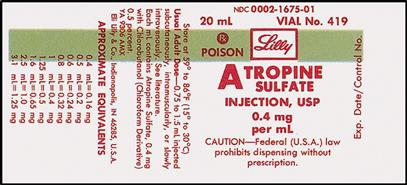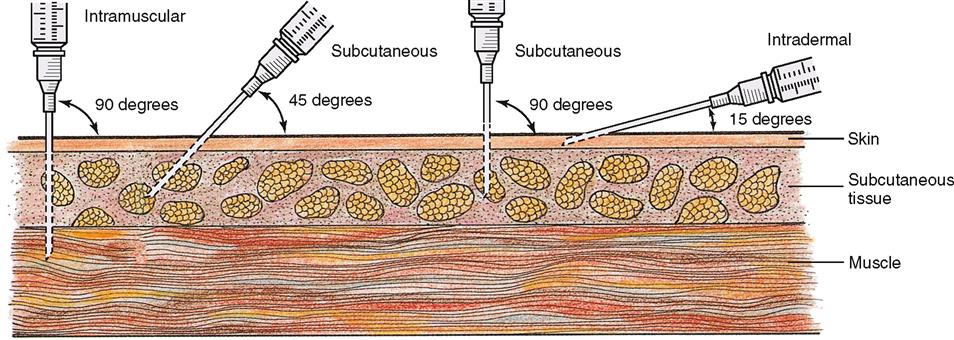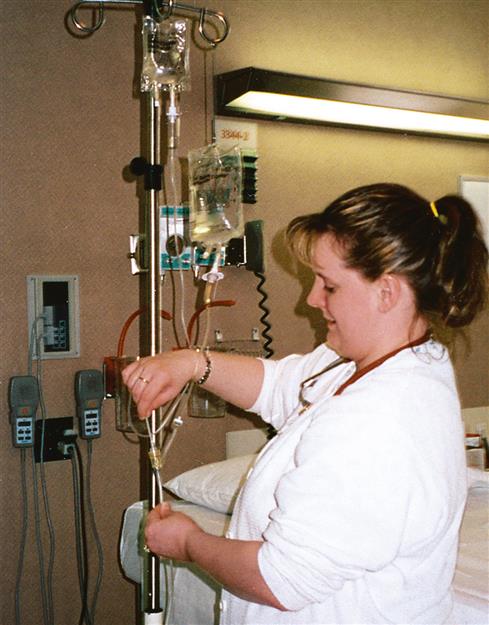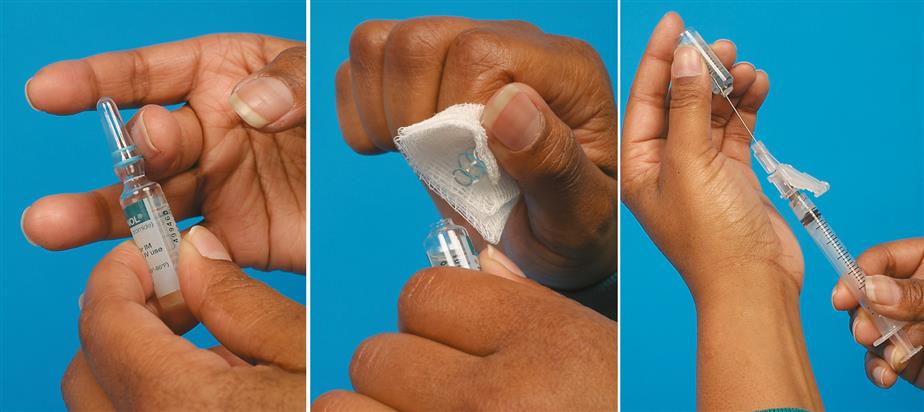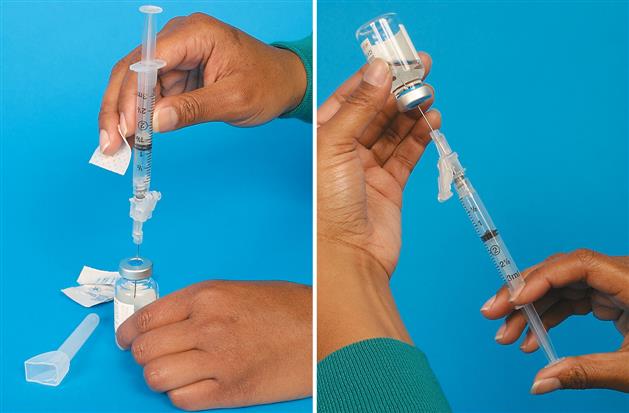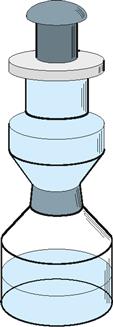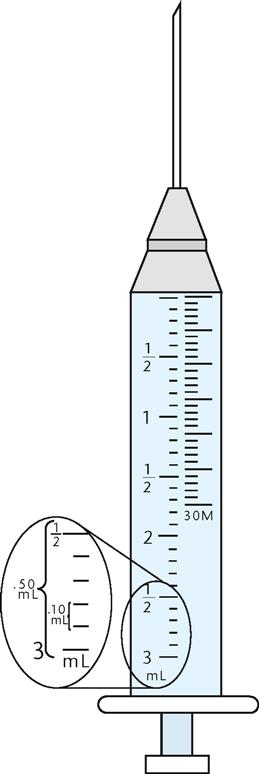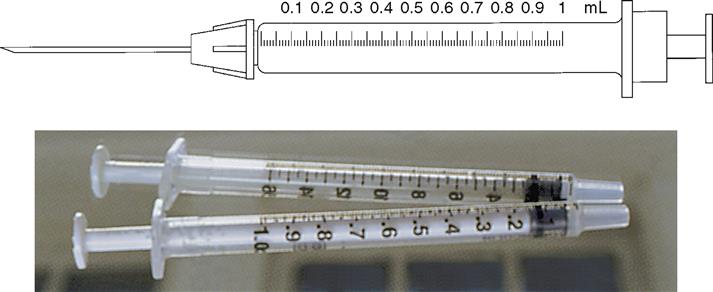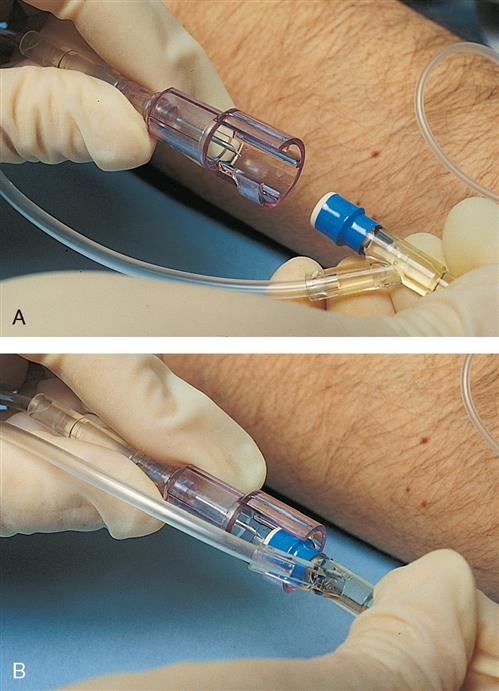 Parenteral Dosages
Parenteral Dosages
LEARNING OBJECTIVES
On completion of the materials provided in this chapter, you will be able to perform computations accurately by mastering the following mathematical concepts:
1 Converting the measure within the problem to equivalent measures in one system of measurement
4 Using the stated formula as an alternative method of solving parenteral drug dosage problems
![]() Parenteral refers to outside the alimentary canal or gastrointestinal tract. Medications may be given parenterally when they cannot be taken by mouth or when rapid action is desired. Some medications are not available by any other method of administration. Parenteral medications are absorbed directly into the bloodstream; therefore the amount of drug needed can be determined more accurately. This type of administration of medications is necessary for the uncooperative or unconscious patient, or for a patient who has been designated NPO (nothing by mouth). An advantage of intravenous (IV) parenteral medications is that the patient does not have to endure the discomfort of multiple injections, especially when the medications are used for pain control.
Parenteral refers to outside the alimentary canal or gastrointestinal tract. Medications may be given parenterally when they cannot be taken by mouth or when rapid action is desired. Some medications are not available by any other method of administration. Parenteral medications are absorbed directly into the bloodstream; therefore the amount of drug needed can be determined more accurately. This type of administration of medications is necessary for the uncooperative or unconscious patient, or for a patient who has been designated NPO (nothing by mouth). An advantage of intravenous (IV) parenteral medications is that the patient does not have to endure the discomfort of multiple injections, especially when the medications are used for pain control.
Parenteral medications are administered by (1) subcutaneous injection—beneath the skin, in fat; (2) intramuscular (IM) injection—within the muscle; or (3) intradermal injection—within the skin (Figure 14-1). Parenteral medications may also be given intravenously (IV)—within the vein. IV drugs may be diluted and administered by themselves, in conjunction with existing IV fluids, or in addition to IV fluids (Figure 14-2). Any time that the integrity of the skin—the body’s prime defense against microorganisms—is threatened, infection may occur. Thus the nurse must use sterile technique when preparing and administering parenteral medications.
Drugs for parenteral use are supplied as liquids or powders. The medications are packaged in a variety of forms. A liquid may be contained in an ampule, which is a single-dose container that must be broken at the neck to withdraw the drug (Figures 14-3 and 14-4).

Vials are also used to package parenteral medications in liquid or powder form. A vial is a glass or plastic container that is sealed with a rubber stopper (Figure 14-5). Because vials usually contain more than one dose of a medication, the amount desired is withdrawn by inserting a needle through the rubber stopper and removing the required amount (Figure 14-6). If the medication is in powder form, the drug must be reconstituted before withdrawal and administration. The diluent in which to dissolve the powder is usually sterile water or normal saline solution.
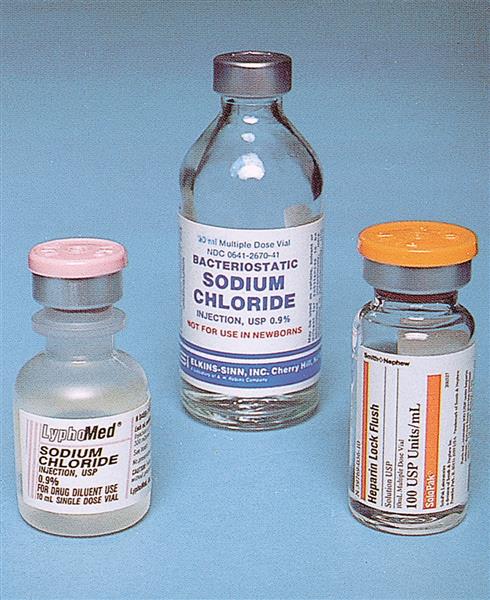
The amount of diluent recommended is printed on the vial or package insert. The powder must be completely dissolved. If the nurse is using a multiple-dose vial, the date and time of mixing should be noted on the vial’s label. Also, some drugs supplied in liquid form must be further diluted before injecting intravenously.
Some of the more unstable drugs may be supplied in vials that have a compartment containing the liquid diluent. Pressure applied to the top of the vial releases the stopper between the compartments and allows the drug to be dissolved. These are called Mix-O-Vials (Figure 14-7).
Medications may also be supplied in either prefilled disposable syringes or a plastic reusable syringe with a disposable cartridge and a needle unit. Such units contain a specific amount of medication. If the medication order is less than the amount supplied, discard the unneeded portion before administering the medication to the patient.
Syringes
For accurate measurement of medications that are to be administered by the parenteral route, a syringe must be used. Each syringe is supplied in a sterile package. Although syringes may be made of glass or plastic, plastic syringes are more commonly used. All are designed to be used only once and then discarded. Figure 14-8 shows the parts of a syringe.

Syringes come in a variety of sizes. The size used depends on the amount and type of medication to be administered. There are three types of syringes: hypodermic, tuberculin, and insulin syringes.
Hypodermic Syringes.
Hypodermic syringes vary in size as to the amount of fluid they can measure. The most commonly used sizes are 2-, 2½-, 3-, and 5-mL syringes (Figure 14-9). Hypodermic syringes are also available in 10-, 20-, 30-, and 50-mL sizes.
Syringes that are smaller capacity can easily be used to measure decimal fractions of a milliliter. Longer lines mark the half and whole number milliliters, and shorter lines mark the decimal fractions. Each line indicates one tenth of a milliliter. With larger-capacity syringes, each mark may represent a 0.2-mL increment, or whole milliliter increments. The larger-capacity syringes are not appropriate for measuring smaller quantities of medication for administration. The nurse must select the proper size syringe for the calculated volume of medication.
Tuberculin Syringes.
A tuberculin syringe is a thin, 1-mL syringe (Figure 14-10). The mL side of the syringe includes markings for hundredths of a milliliter. These syringes are commonly used in pediatrics and also to measure medications given in very small amounts, such as heparin. Tuberculin syringes should not be confused with insulin syringes.
Needleless System.
The Occupational Safety and Health Administration has recommended administration of parenteral medications with the use of a needleless system. This recommendation is for the protection of both patients and nurses from needlesticks. Needleless systems provide a shield that protects the needle device and is only for IV use (Figure 14-11).
Calculation of Parenteral Drug Dosages: Proportion Method
Parenteral drug dosages may also be calculated by using a proportion. The physician’s order and the available medication must be in the same system of measurement to write a proportion for the actual amount of medication to be administered. Examples of parenteral drug dosage problems follow.
EXAMPLE 1: The physician orders Apresoline 30 mg IM. Apresoline 20 mg/mL is available. How many milliliters will the nurse administer?
a. On the left side of the proportion, place what you know or have available. In this example, there are 20 mg/mL. Therefore the left side of the proportion would be

b. The right side of the proportion is determined by the physician’s order and the abbreviations placed on the left side of the proportion. Remember, only two different abbreviations may be used in a single proportion.


The symbol x is used to represent the unknown number of milliliters.

c. Rewrite the proportion without the abbreviations.

d. Solve for x.

e. Label your answer as determined by the abbreviation placed next to x in the original proportion.

The patient would receive 1.5 mL of Apresoline containing 30 mg.

EXAMPLE 2: The physician orders meperidine 30 mg IM q4 h prn. Demerol 25 mg/mL is available. How many milliliters will the nurse administer?

a. On the left side of the proportion, place what you know or have available. In this example, each milliliter contains 25 mg. So the left side of the proportion would be

b. The right side of the proportion is determined by the physician’s order and the abbreviations on the left side of the proportion. Only two different abbreviations may be used in a single proportion. The abbreviations must be in the same position on the right side as they are on the left.

In this example the physician ordered 30 mg.

We need to find the number of milliliters to be given, so we use the symbol x to represent the unknown.

c. Rewrite the proportion without using the abbreviations.

d. Solve for x.
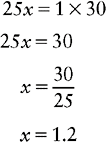
e. Label your answer as determined by the abbreviation placed next to x in the original proportion.
The nurse would measure 1.2 mL to administer 30 mg of Demerol.
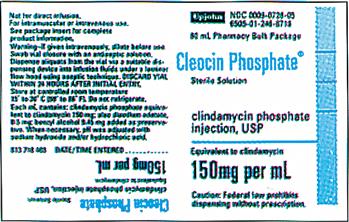
EXAMPLE 3: The physician orders Cleocin phosphate 450 mg IV q6 h. Cleocin 150 mg/mL is available. How many milliliters will the nurse administer?
b. 150 mg:1 mL ::__________mg:_________mL
150 mg : 1 ml:: 450 mg : x mL

e. Label your answer as determined by the abbreviation placed next to x in the original proportion.

The nurse would measure 3 mL to administer 450 mg of Cleocin.

Parenteral Drug Dosage Calculation: Alternative Formula Method
In Chapter 13, the alternative formula was introduced as another method of calculating drug dosages. This formula also may be used when parenteral drug dosages are calculated.
Remember, the formula is

EXAMPLE 1: The physician orders Amikin 150 mg IM q8 h. Amikin 500 mg/2 mL is available. How many milliliters will the nurse administer?
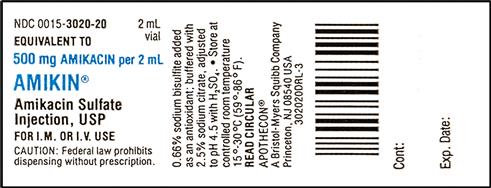
a. The desired amount of Amikin is 150 mg.

b. The available amount of Amikin is 500 mg.

c. The quantity of the medication for 500 mg is 2 mL.


e. Label your answer as determined by the quantity.

EXAMPLE 2: Mr. Davis is to receive atropine 0.4 mg IM stat. Atropine 0.4 mg/mL is available. How many milliliters will the nurse administer?
